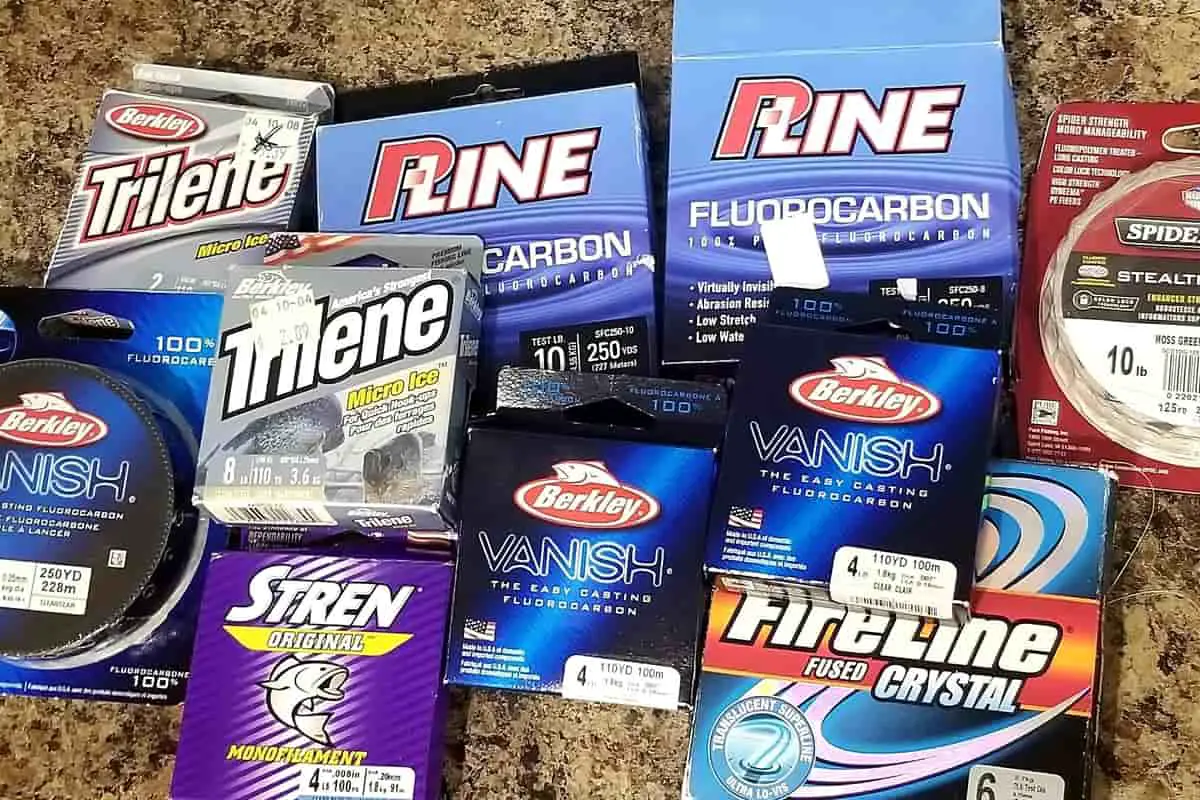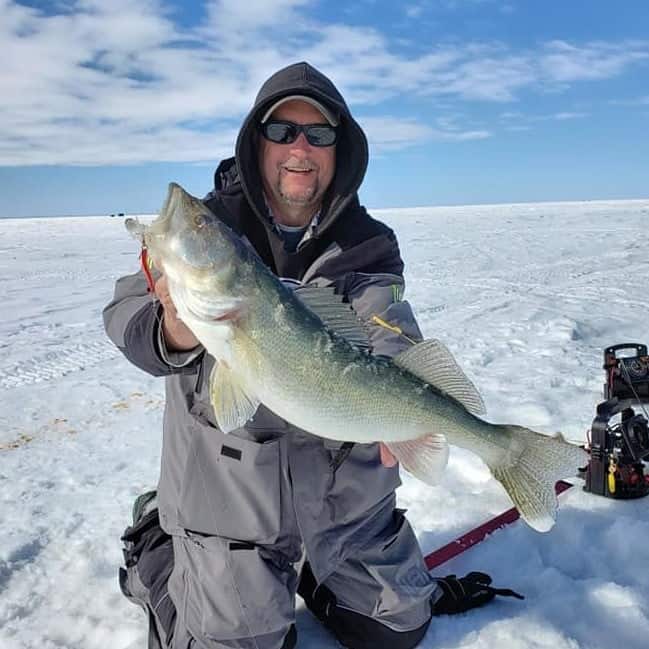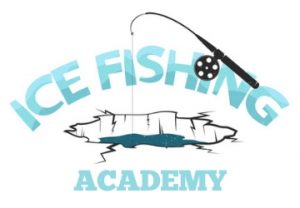Why can’t we use the same fishing line all year long? With all the specialized products we need to buy for our particular style of fishing and the fish we like to chase, what’s the difference between the various ice fishing lines?
Ice fishing lines are designed for much harsher conditions than regular fishing lines. Ice fishing lines are abrasion and cold resistant and much stronger with thinner diameters than their counterparts. Thinner, stronger lines are less detectable in the water and will keep line memory to a minimum.
Every season the fishing manufacturers release more realistic-looking lures, but the old ones still work fine! It’s often said lures are designed to catch fishermen more than they are fish!
But what about fishing lines? Are fishing companies coming out with more lines each year to catch more fishermen and their wallets?
Let’s go over some of the primary differences in various fishing lines that will make a huge difference with your day on the ice! Because not all fishing lines are created equal!

Can You Use Normal Fishing Line for Ice Fishing
With the harsher conditions of winter fishing compared to summer fishing, there is also a variety of fishing line enemies you won’t see during the rest of the year.
- Fraying around sharp ice edges
- Freezing and icing up
- Lines don’t sink naturally with light ice fishing jigs and flies
- Extreme coil memory
Most people consider a monofilament line, mono for short, as their normal fishing line. It’s made from a single strand of plastic. I, much like yourself, have probably used mono fishing lines since we were kids.
Monofilament lines are inexpensive. It is easy to tie knots with mono lines too. And you can also find spools of monofilament lines in most convenience stores in the smallest of towns!
The drawback of using a regular line like mono is that it tends to fray easily when rubbing on an ice hole’s sharp edges. Ice will also build up on the line as you jig or reel your line in and let it back out.
Another drawback of using mono during the cold winter months is it doesn’t sink naturally when you’re using light jigs, spoons, or ice flies. And then, of course, once the line gets cold, it can come off your spinning reels in large coils!
Monofilament fishing lines have a strong memory when they become cold. When it’s warm out during the summers, it flows pretty freely, but once it turns cold, it becomes hard and doesn’t straighten out.
Do You Need Special Line for Ice Fishing
The simple answer is no. You don’t need a unique, specialized fishing line for ice fishing. Many folks travel out onto the ice and use a fishing line that has been around for years and years – A monofilament fishing line.
Every year I see and fish with guys that use a regular fishing line and do very well. There are trophy walleye, lake trout, and other fish caught with regular fishing lines.
It’s not uncommon to see or hear about someone landing a large northern pike on a 2lb or 4lb test line while fishing for bluegills! So you do not necessarily need to have a specialized ice fishing line to head out on the ice for a day of fishing!
Now, with all that being said, using a fishing line designed for ice fishing is certainly going to perform better for you!
What Kind of Line Should I Use for Ice Fishing
My preferred line to use is a fluorocarbon line. I use this line on a number of my lightweight spinning setups. I will also use fluorocarbon as a leader attached to the braided line on my heavier lake trout rods.
I find with fluorocarbon that it’s definitely stronger than the monofilament lines and will also have a thinner diameter. It is abrasion-resistant, doesn’t retain the line memory like mono, and has low visibility to the fish.
And since fluorocarbon lines do not stretch like monofilament lines, it has a greater sensitivity! You can feel the lightest of bites!
The other advantage of using fluorocarbon is, if you have a lot of line out and set the hook, there is no stretch to the line! When you slam your hook home, you don’t have to stretch out a foot of line or more to bury the hook point! It sets right away!
Can You Use Regular Braided Line for Ice Fishing
Braided lines are good choices for their ultra-thin diameters, low stretch, and toughness when rubbing against the ice. The small diameter of the line allows lures and baits to fall much more naturally.
Braided lines are less detectable than other lines and also a great choice for stained waters.
I find the issue with braided lines are they tend to ice up quickly, and the line becomes difficult to pass through the smaller guides on my rod. The ice buildup on the lines can also be seen on my flasher, sometimes down to thirty feet or more!
You may be interested in this article! Are Ice Fishing Flashers Worth It? (Yes! 3 Reasons!)
Braided line also has just about has zero stretch to it. This is an advantage when fishing deeper holding light biting fish, as well as hook setting.
Its ability to not twist or hold their memory like other lines makes fishing it on small diameter spinning reels a huge plus!
Does Line Color Matter for Ice Fishing
In some areas, fish will shy away from the thinnest of lines, while fishing lines do not seem to bother the fish in other regions! There is a consensus from line manufacturers, though, as to which color line is best.
The best overall fishing line color is low-viz green. Low visibility green lines will blend into more fishing environments than other colors. And are the best overall choice of line color for many conditions. Attaching a three-foot fluorocarbon leader will alleviate any line color concerns.
Yellow lines are great when used for sight fishing as you can detect bites by watching the line. Not only are yellow lines great for sight fishing, but fishing line companies developed the yellow lines to be seen better on the ice and snow!
Red lines were popular for a while but have since tapered off somewhat in use. I rarely see anyone using a red fishing line when I’m in a group.
When red fishing lines first came out, the theory was red is the first color to be filtered out of the water as it falls deeper. So fish wouldn’t see it.
But from what I’ve read, divers will tell you red turns to a black color as it gets deeper and becomes visible.
Red lines were easier to see and would stand out more than the other colors at the time. A plus is, by watching the line, you would detect more bites too.
Blue-colored fishing lines are also suitable for ice fishing. Although you’ll find red lines still available on the shelves, blue lines have made significant inroads into the ice anglers’ color selection.
Blue lines are easy to see when tying knots and when laying on top of the ice. Once beneath the water, they will become much less visible too.
Should I Use a Fluorocarbon Leader
Fishing conditions will dictate which color line is best for that application since one color will not fit all situations. I enjoy using the green-colored braided lines for their durability and no-stretch qualities.

So how do you make any line almost invisible to the fish? Use a three-foot fluorocarbon leader! That’s what I landed the walleye above with! PowerPro Spectra Moss Green Braided Line with a fluorocarbon leader!
Fluorocarbon is super thin for its size, holds knots well, durable and abrasion-resistant. The additional three-foot of leader will make your presentation virtually invisible to the fish!
Whether I’m fishing lake trout in the clear waters of Pactola Reservoir, SD, or Lake Winnipeg walleyes in Manitoba, Canada, I always tie on a three-foot section of fluorocarbon leader to my braided line!
How To Keep Ice Fishing Line From Freezing
The real answer is you can’t keep all fishing lines from freezing up all the time! Ice fishing lines are now made with protective coatings, which will help keep ice off your line and guides.
Fishing in an ice shack or shelter will certainly keep ice from forming on your line. But if you’re like I am, I’m not much on sitting in one spot! I like to stay on the move when targeting certain fish species.
Plus, I like to use braided lines, so I have to put up with a certain amount of ice on my line. I do run the line through my gloved hands to wipe off the larger pieces which build up.
Sometimes I will pass the line through my mouth to melt ice crystals off near the lure, but don’t hook yourself!
When you’re ice fishing, the conditions can be cold, wet, and freezing at times. So I would certainly lean toward using a fishing line designed for ice fishing, with a protective coating, rather than a regular monofilament type of line.
Have fun and stay safe out there!
